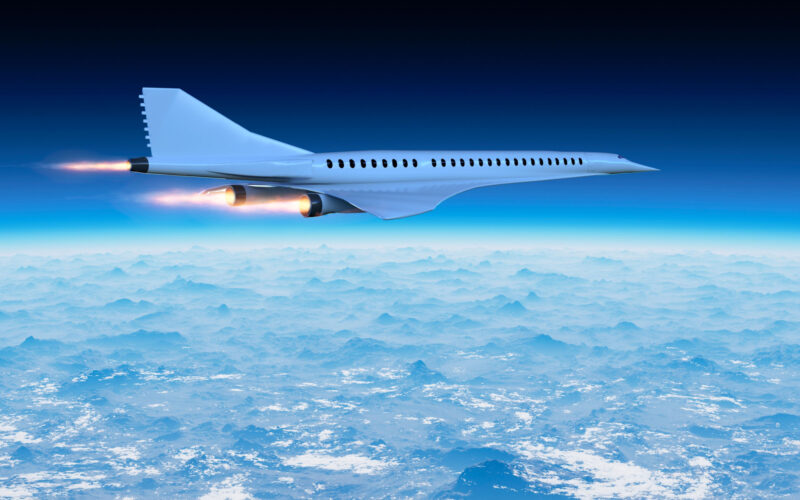The return of supersonic travel is an appealing thought. It has been 76 years since Chuck Yeager broke the sound barrier in level flight for the first time, and over 50 years since Concorde made supersonic travel a reality for the paying public. However, no modern airliners can fly faster than sound.
But maybe it’s time to try again?
With all the wonders of modern materials, digital engineering, and the bottomless pockets of celebrity billionaires, surely it’s possible to bring supersonic commercial aircraft back to the skies. Perhaps skilled engineers could build a supersonic jet that is almost as cheap and quiet as regular subsonic airplanes. And if the affordable part doesn’t work out, maybe business aviation could step in.
Are supersonic planes coming back?
Are supersonic planes coming back? It certainly seems so. Dozens of projects to build commercial supersonic aircraft have been initiated, and some prominent airlines have already announced plans to buy small fleets of these planes.
However, as of 2023, no new supersonic airliner has taken to the skies. Nonetheless, several firms are currently in the process of testing the technologies that could be used in these planes.
The primary challenge in bringing back supersonic travel lies in reducing the disruptive effect of the sonic boom. When an aircraft flies faster than the speed of sound, it generates a strong sound wave that can shatter windows and cause injuries.
This is why the Concorde, the only supersonic airliner to see extensive use, was limited to flying over oceans. Many countries have codified these restrictions into law, allowing supersonic flight only for military jets when absolutely necessary. Overcoming this challenge and finding a solution to minimize the sonic boom is crucial for the revival of supersonic commercial air travel.
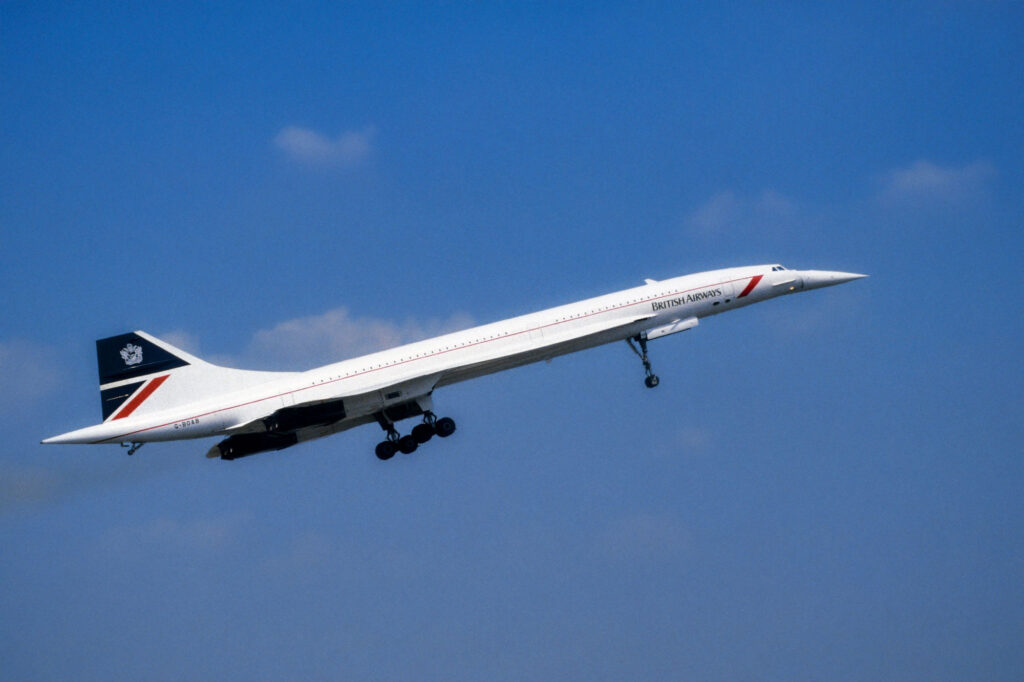
Is supersonic flight illegal?
In many countries, including the United States (US), commercial supersonic flight remains banned. However, attempts are underway to change this. In 2020, the US Federal Aviation Administration (FAA) established a special corridor over Kansas for testing civilian supersonic aircraft. If these tests prove successful, and the new aircraft do not produce destructive supersonic booms, the ban may eventually be lifted.
Thus, a lot hinges on the efforts to develop these ‘quiet’ supersonic jets. With private companies and government agencies such as NASA heavily involved, it seems that just one successful demonstration could be enough to prove the viability of the concept.
As such, it feels as though barely a day goes by without the announcement of another supersonic business jet project. While some disappear after a couple of press releases, others manage to raise significant funds. Their sheer number makes it challenging to keep track of them all.
Here at AeroTime, we’ve taken an in-depth look at the existing proposals and consolidated them into an easily digestible list, making it simple to monitor their progress over the coming year. Proposals are ranked by their level of realism and proximity to completion. Regrettably, we’ve had to exclude projects that have either stalled or been discontinued — for example, the Sukhoi-Gulfstream S-21 and Boeing 2707.
Research aircraft, such as the Lockheed Martin X-59 QueSST, are also omitted as they do not carry passengers.
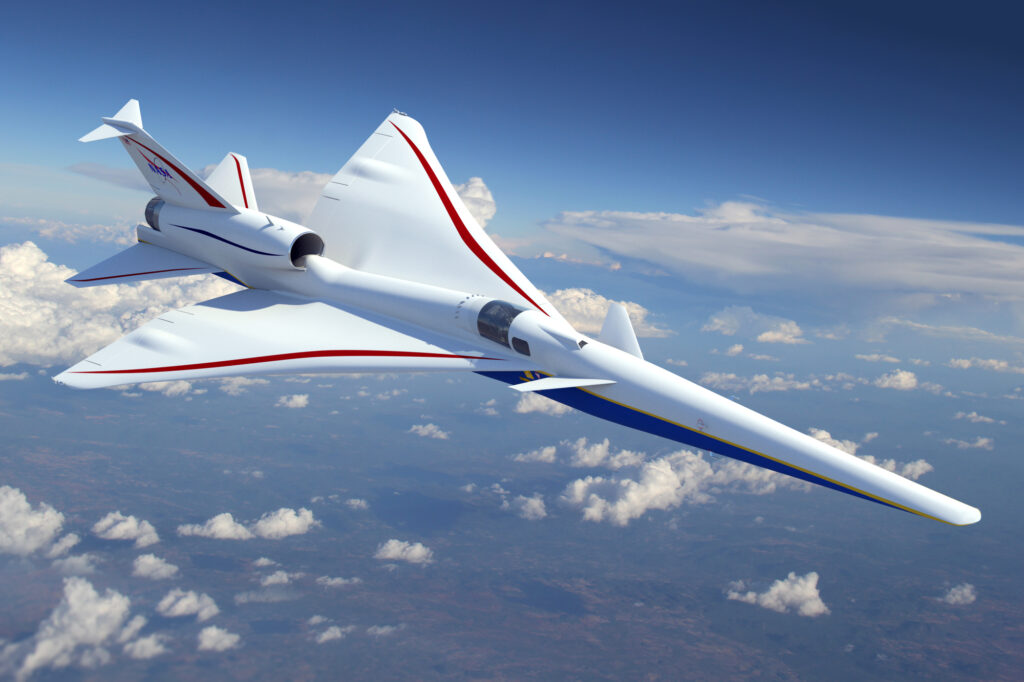
With one notable exception, hypersonic proposals — those promising to fly faster than Mach 5, or five times the speed of sound — have been excluded. While projects by Hermeus, and HyperMach are certainly exciting, they are too complex to be deemed realistic in the short term. Hypersonic commercial flight represents the next step, but this is only achievable once supersonic transports have proven their worth.
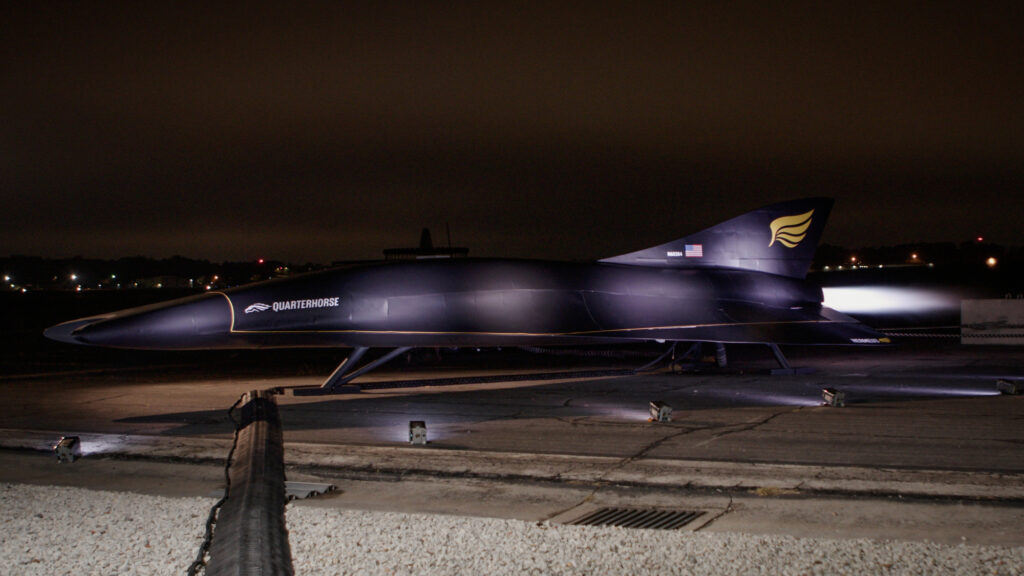
So, without further ado, let’s explore the 10 most promising supersonic business jet projects to look out for in the future, starting with the least promising ones.
Honorable mention: Aerion SBJ, AS2 and AS3
First, it’s essential to mention an influential player that has recently fallen out of the race.
For quite some time, it appeared that Aerion – a venture by Texan billionaire Robert Bass – was at the forefront of the supersonic race. The company secured prominent financiers and engineers, and its natural laminar flow design, promising to greatly increase the aircraft’s efficiency, was very promising.
In 2004, the Aerion SBJ was unveiled, boasting a capability of carrying up to 12 passengers at Mach 1.6 – nearly twice the speed of conventional airliners. By 2014, it was replaced by an updated model called the Aerion AS2, equipped with several futuristic design features, allowing it to produce almost no sonic boom while cruising at Mach 1.2. Then, in March 2021, the company revealed the Aerion AS3, a near-hypersonic version capable of cruising at Mach 4, or four times the speed of sound.
However, behind the scenes, trouble was brewing. Aerion had initially partnered with Airbus on the development. By 2017, Airbus had severed ties with the company, but Aerion received support from Lockheed Martin and General Electric. Yet, both of these companies also withdrew from the project in 2019. Boeing stepped in to partner with Aerion, coincidentally, at the same time the American aerospace giant was grappling with the 737 MAX debacle.
By the beginning of 2021, Aerion had accumulated more than 300 orders, completed wind tunnel testing for some models, and even started building a factory in Florida. But in May 2021, the company collapsed, reportedly due to a lack of funding. Thus, the dream of the sleek red fuselage of the AS2 gliding above the clouds, faster and smoother than any aircraft before it, was shattered, never to see the light of day.
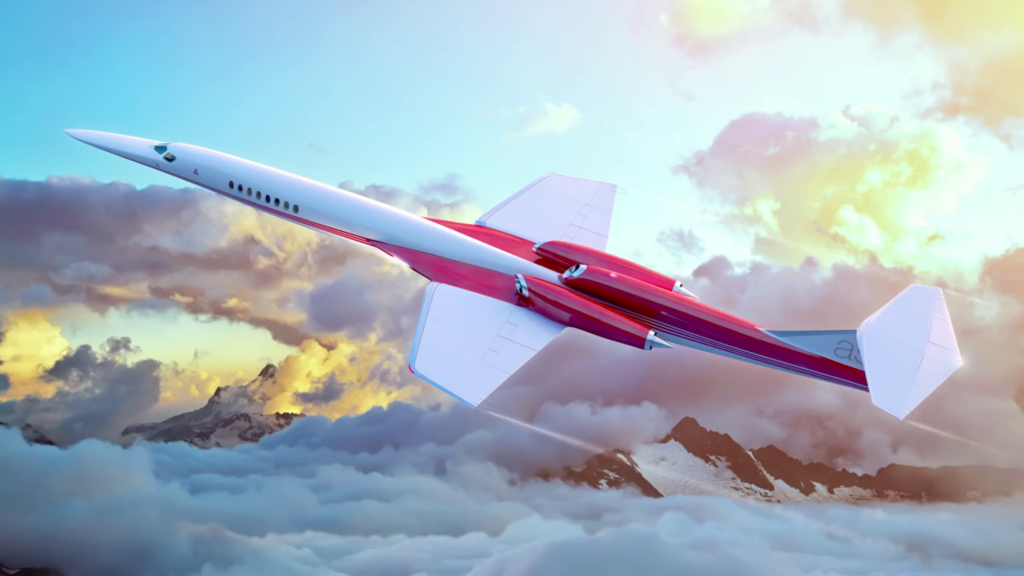
Now that we’ve addressed the story of Aerion, let’s turn our attention back to the supersonic projects that currently hold more promise.
Top 10 supersonic business jets
10. SAI Quiet SuperSonic Transport (QSST)
The X-59 QueSST technology demonstrator, a collaboration between Lockheed Martin and NASA, is scheduled to conduct its maiden flight in 2023. It is a poster child of the supersonic race, and is intended to test the possibility of reducing sonic boom – the very thing that limited the operations of first generation supersonic airliners.
Not many people know that the roots of the X-59 date back to a particular business jet – the QSST, in development by Supersonic Aerospace International (SAI). The company, created by Michael Paulson, the son of Gulfstream founder Allen Paulson, contracted Lockheed Martin’s Skunk Works division to develop a 12-seat, Mach 1.8 aircraft which would produce virtually no sonic boom in cruise flight.
But the development was plagued by problems. By 2010 the company had almost disintegrated, only to reemerge in 2013 with a new project – a larger and sleeker supersonic jet. However, new publicity did not help to generate more funds, and the project stalled. On the strength of Lockheed Martin’s work for SAI, NASA selected it to build the X-59.
But what happened to SAI and its plans? Nobody knows. The company’s website still displays the last update from 2014, and Michael Paulson, Allen’s son, has disappeared from public view. Yet, a lot of money and time was poured into the development. Could SAI emerge again?
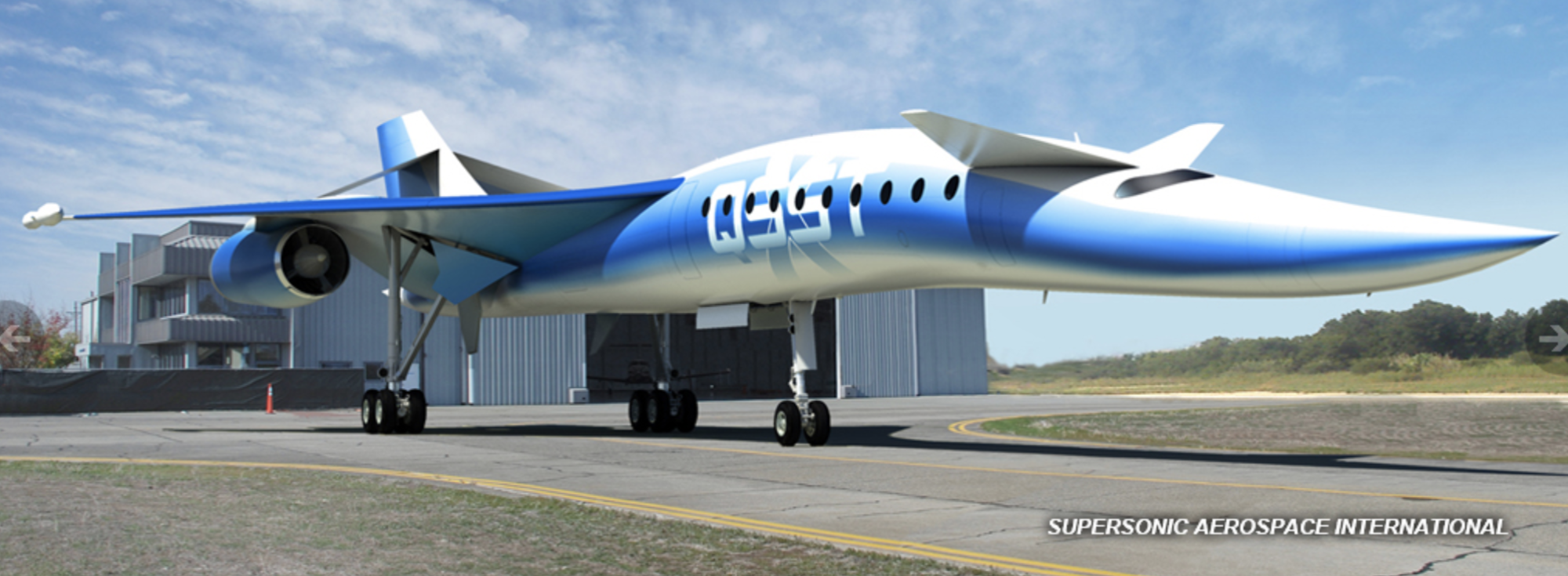
9. EON nxt-01
Eon Aerospace was founded by South African billionaire and tech entrepreneur, Priven Reddy. In August 2021 he announced the launch of his own aerospace startup – L.E.A.P., short for Leading Edge Aviation Propulsion (not to be confused with the LEAP, a successful turbofan engine by CFM international).
Since then L.E.A.P. has been quietly renamed Eon but has retained its ambitious plans. The first product from the company – the nxt-1 – is supposed to use quiet sonic boom technology, have the speed of Mach 1.9, and fly at an altitude of 60,000 feet (18,000 meters).
The company also promises to operate with net-zero carbon emissions, develop a bladeless engine for the improved version of the jet, and conduct the first service by 2029. The aircraft will have between 65 and 88 seats, which would make it viable for airlines. Nevertheless, just as with any aircraft, it can have a bizjet variant. If built, it most likely will.
It also promises to feature the same low-boom technology from the X-59 QueSST demonstrator, which would mean that the nxt-01 could fly above land without shattering windows and eardrums with its sonic boom.
Eon’s promises are attractive. Yet, the company does not have any experience in aerospace manufacturing and has not demonstrated any achievements besides a host of beautiful 3D renders of its upcoming product. Can it fulfill its promises? Let’s hope so.
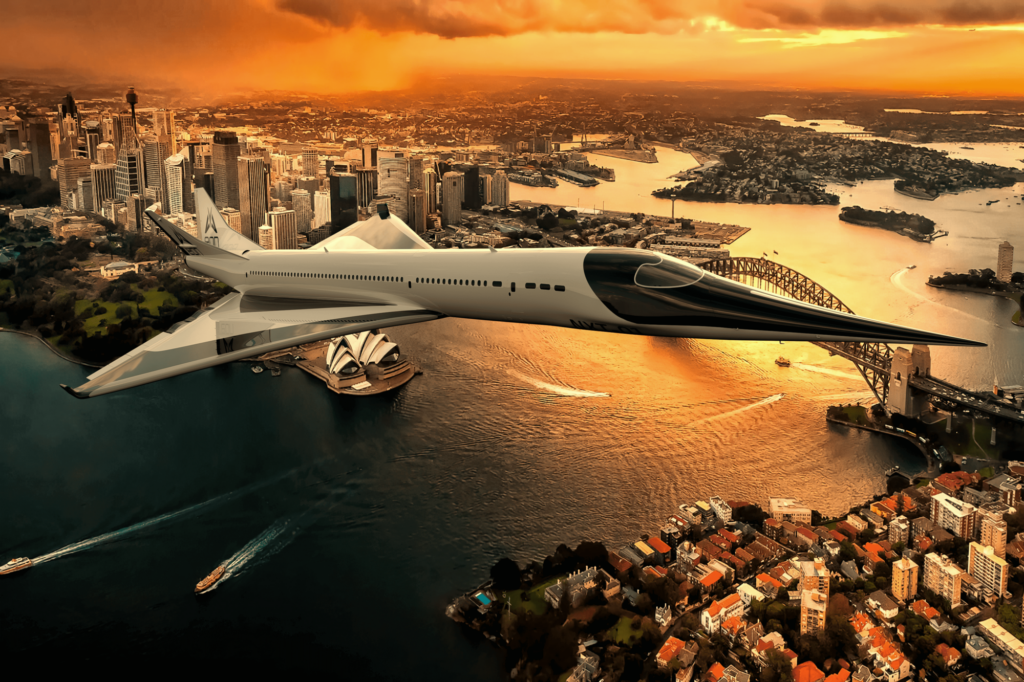
8. Unnamed Russian supersonic jet
Russia had countless projects to build small supersonic commercial aircraft throughout the years. It all started with the proposal to convert the MiG-25 supersonic interceptor for passenger service in the early 1960s and never stopped.
There was the Tupolev Tu-144, and several initiatives in the 1990s, and several more in the 2000s. But the real kick-start was given in 2018 when Russian President Vladimir Putin floated the idea of adapting the Tu-160 strategic bomber for passenger service. As bizarre as that idea was, it prompted Russia’s United Aircraft Corporation (UAC) to react and produce some viable concepts for a small supersonic jet.
The latest news is that drone company Kronshtadt is going to manufacture an unmanned technology demonstrator for the project, but neither deadlines nor specifications are clear. It is only known that several variants are being studied – among them an eight-seat business jet and a 30-seat airliner, both capable of flying at Mach 1.8, having a range of up to 8,000 kilometers, and featuring an indigenous version of the low-boom design.
While it has been announced that the United Arab Emirates (UAE) is interested in collaborating with Russia on the project, its future is unclear. In April 2021, the head of state conglomerate Rostec called the project “economically unfeasible”. Rostec actually owns UAC, so, if the parent company does not see much point in pursuing the project, it might follow the fate of dozens of previous supersonic transports proposed in Russia.
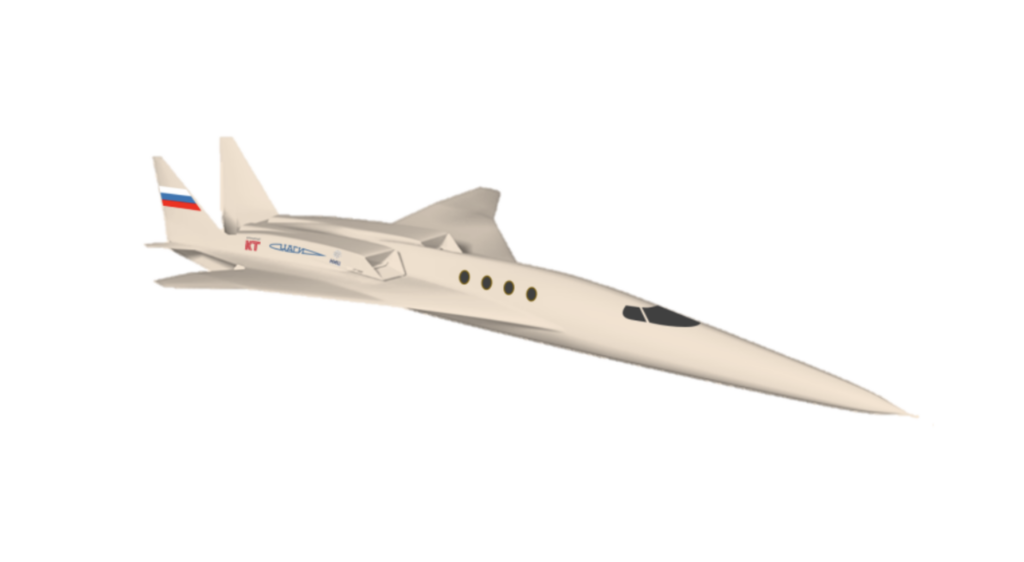
7. Unnamed Chinese hypersonic jet
This is the one and only exception to the rule of excluding hypersonic projects in AeroTime’s list.
Recently, China has proposed a lot of strange and science fiction-inspired aircraft concepts. Among them is the idea of building a six-seat hypersonic commercial aircraft by 2035. While the development is very secretive, the goal is clear, and it has a deadline – the latter being a feature that most other hypersonic proposals lack.
China’s recent progress with hypersonics actually lends credibility to this idea, and since the development is being conducted by government-funded research institutions, it does not have to abide by the ever-present laws of commerce. This means that China might build it despite no promise of profits.
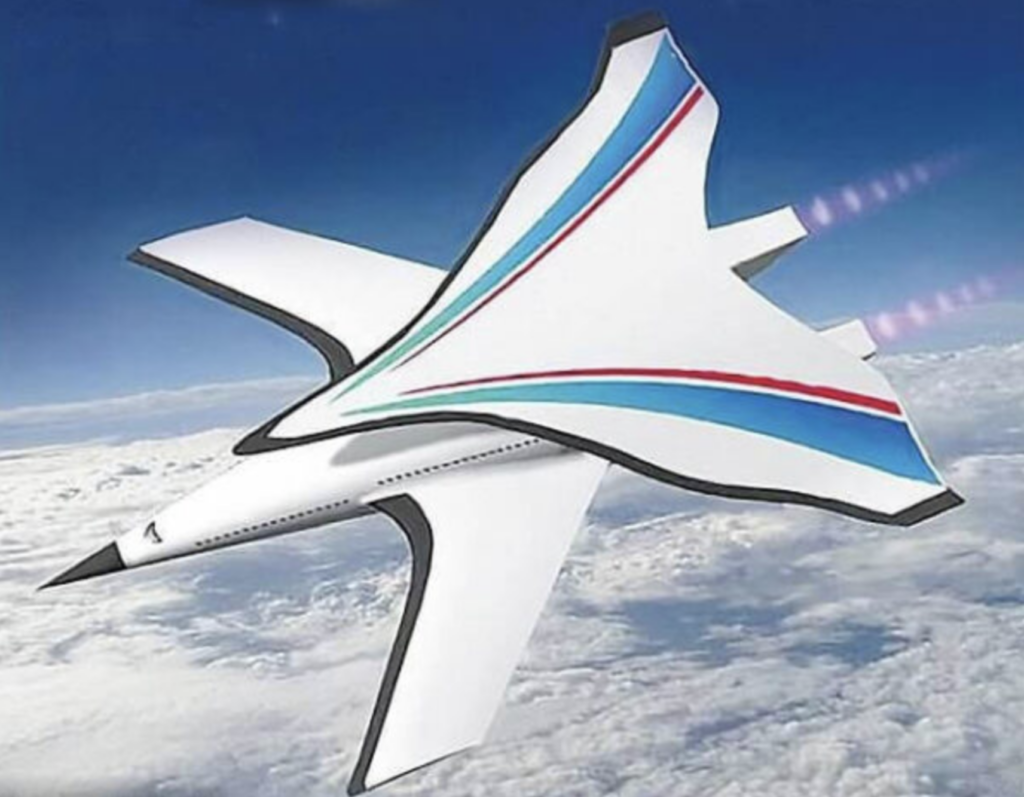
6. Unnamed Virgin Galactic supersonic aircraft
Richard Branson’s Virgin Galactic announced its entry into the market in August 2020. The aircraft will carry 19 people at an altitude of 60,000 feet (18,000 meters) and at the speed of Mach 3, the company said.
On their own, those numbers look impressive – most other supersonic bizjet projects barely scratch Mach 2, and are somewhat smaller. But it is difficult to tell how seriously the company takes this project as no further information has been revealed – no deadlines, no costs, nothing. Is Virgin Galactic’s project just a way to attract attention?
On the other hand, the company has demonstrated that it can impress – when its Unity flew Branson to the edge of space. Maybe, one day, the supersonic jet project will take off too.
5. Lockheed Martin Quiet Supersonic Technology Airliner (QSTA)
Lockheed Martin is the first entry on our list which seems to have a decent chance of coming to fruition.
The company worked on the X-59 QueSST for the better part of the past decade, gaining knowledge and know-how on quiet supersonic flight technology. After partnerships with SAI and Aerion failed one after another, Lockheed Martin decided to do the job itself.
Its own supersonic airliner project was unveiled in 2019 – a 40-seat Mach 1.8 project with a V-tail and a range of 5,200 nautical miles (9,600 kilometers). By 2023, Lockheed Martin hopes to achieve significant milestones by testing the X-59, and begin designing the QSTA in earnest.
The aircraft is going to be a bit bigger than a regular business jet. Nevertheless, if successful, it will probably have a bizjet variant, especially if Lockheed Martin manages to be one of the first companies to build a commercial supersonic aircraft with low-boom features.
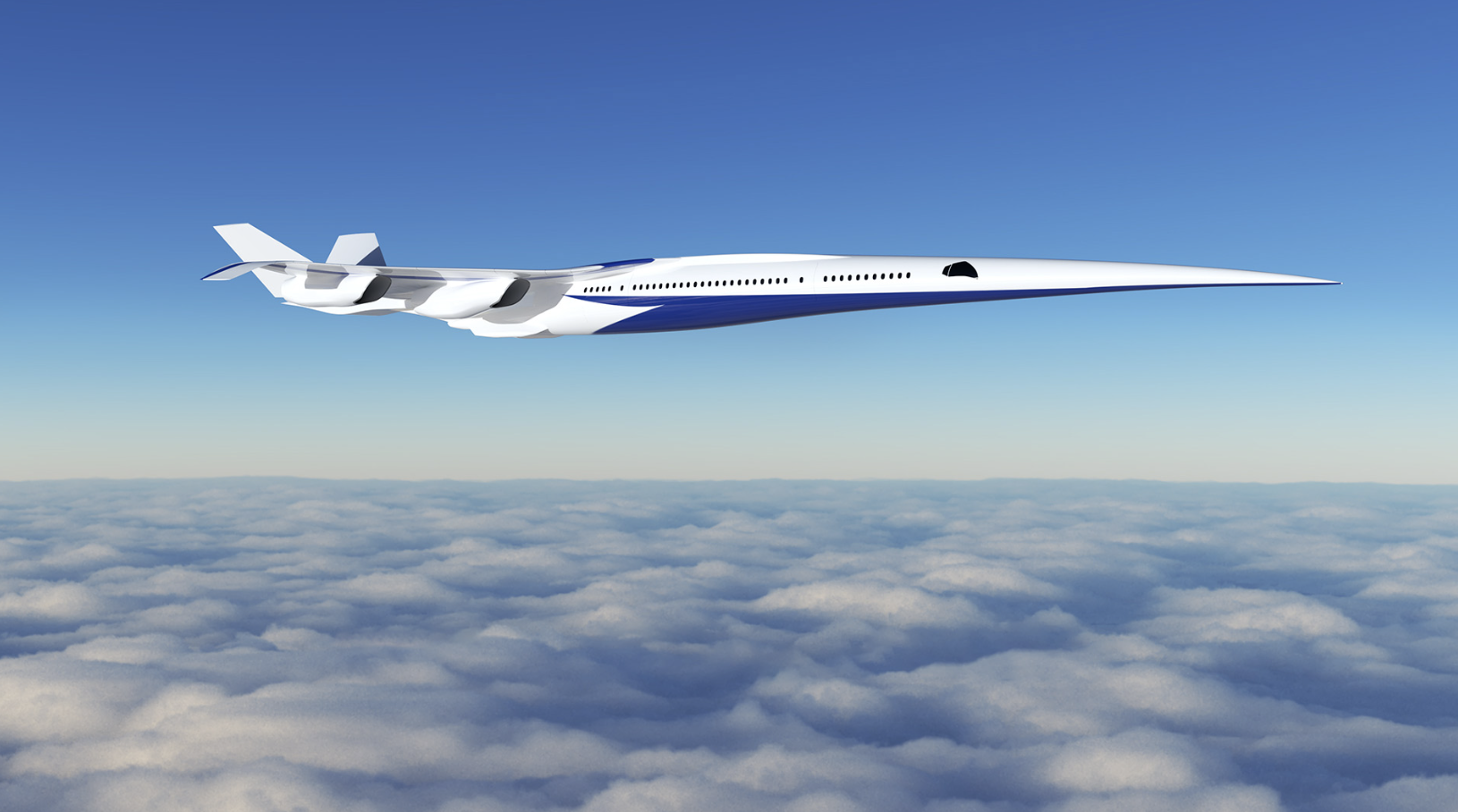
4. Unnamed Japanese supersonic jet
Japan Aerospace Exploration Agency (JAXA) has been mulling the idea of a supersonic commercial jet for quite some time, and even tested a small-scale prototype in 2005.
In June 2021, JAXA organized a body called the Japan Supersonic Research (JSR) council, which includes Mitsubishi Heavy Industries, Kawasaki Heavy industries and Subaru – all working towards making a 50-seat supersonic jet that would consume at least 13% less fuel and have a 50% smaller sonic boom than the Concorde.
No further information was revealed but, judging by the companies involved, it seems like a solid project.
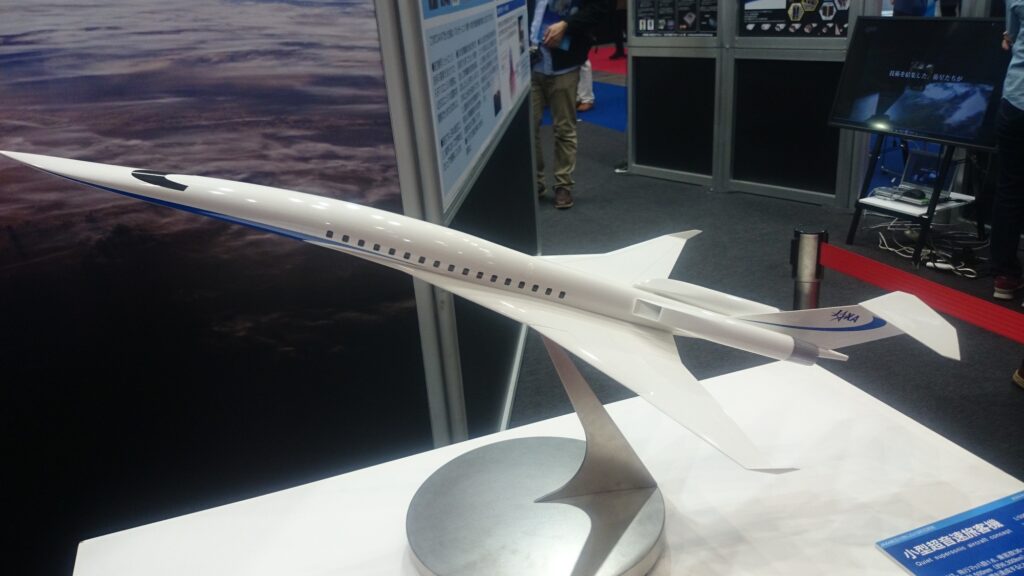
3. Exosonic Supersonic Jet
Exosonic’s proposal is simple: it wants to make a 70-seat Mach 1.8 passenger plane which, in terms of individual tickets, would be as cheap as a regular business class ticket today.
This does seem like a bit of a stretch given that other supersonic transport proposals involve either smaller speeds, smaller capacities, or avoiding talking about the price. But, in September 2020, Exosonic was awarded a contract by the US Air Force Presidential and Executive Airlift Directorate – the agency that runs the United States Presidential and Executive Airlift fleet.
On top of that, in October 2021 Exosonic secured another big contract for supersonic drones, which suggests that the US government takes the company seriously.
Exosonic aims to achieve certification for its aircraft by the year 2029.
2. Spike S-512
Spike Aerospace is a bit of a mystery. On the one hand, it is one of the most successful and prominent supersonic transport projects of this new generation. It was established in 2014, tested a subscale prototype by 2017, and has been staying in the zeitgeist with constant updates.
On the other hand, little is known about the company and its projects beyond several 3D renders and an ever-receding deadline. Initially, it promised to operate the jet by 2018; as of late-2023, no tangible results have been published even though deliveries were promised to start in 2023 – even the demonstrator flights have been kept secret with no pictures or results revealed.
Nevertheless, it does seem to hold a lot of promise. Spike’s business jet is expected to be a low-boom, Mach 1.6 capable aircraft configurable to carry between 12 and 18 passengers. One of its main features is the windowless cabin, with screens all over the walls. The idea could certainly make the engineering of the plane easier, but it is yet to be successfully implemented or tested.
1. Boom Overture
Together with Spike and Aerion, Boom Technology is one of the most talked-about companies, and one of the leading voices in supersonic flight research. The concept for the Overture airliner was revealed in 2016 and has undergone significant changes since then as the firm researched the market.
Boom’s concept is much simpler than those of its competitors: its top speed is only Mach 1.7, and the aircraft does not have any ultra-modern features such as a windowless cabin or even a low-boom design. While this means that the Overture would only be allowed to fly over oceans, it could make up for that with a cheaper price and shorter development time.
The company is very close to the demonstrator’s test flight, received a contract from the US Air Force, and accepted several dozen orders from major airlines. It expects to test a full-scale prototype of the Overture by 2026 and begin mass-producing the jet by the end of the 2020s.
Presenting itself as a successor to the Concorde project – even down to hiring people who worked on the legendary jet – Boom Technology is aiming high. And while the aircraft itself seems unremarkable when compared with other entries on this list, it also appears to be the most realistic and has the highest probability of being built.
There is, however, one more hurdle standing in the way of realizing these supersonic projects: their potential impact on the climate.
Are supersonic planes environmentally friendly?
Environmental regulations in many countries have increased dramatically since the first generation of supersonic jets, and the public’s awareness of how important it is to reduce emissions has risen. On top of that, the output of emissions is directly tied to the consumption of fuel. More efficient aircraft which pollute less are also a lot cheaper to fly – an equation which determined the incredible rise in efficiency (and size) in the last generation of aircraft engines.
Not inherently, but they have the potential to be. The aviation industry has made significant strides in reducing its environmental footprint in recent years, and many companies assert they can hold their supersonic innovations to the same standards.
Almost every company mentioned in this list highlights the efficiency and minimal environmental impact of their forthcoming jets in their promotional materials, expressing their intent to greatly improve upon Concorde’s less-than-impressive emissions record.
So, can companies promising to accelerate aviation also deliver on their promise to make it more eco-friendly? Time will certainly be the judge.

